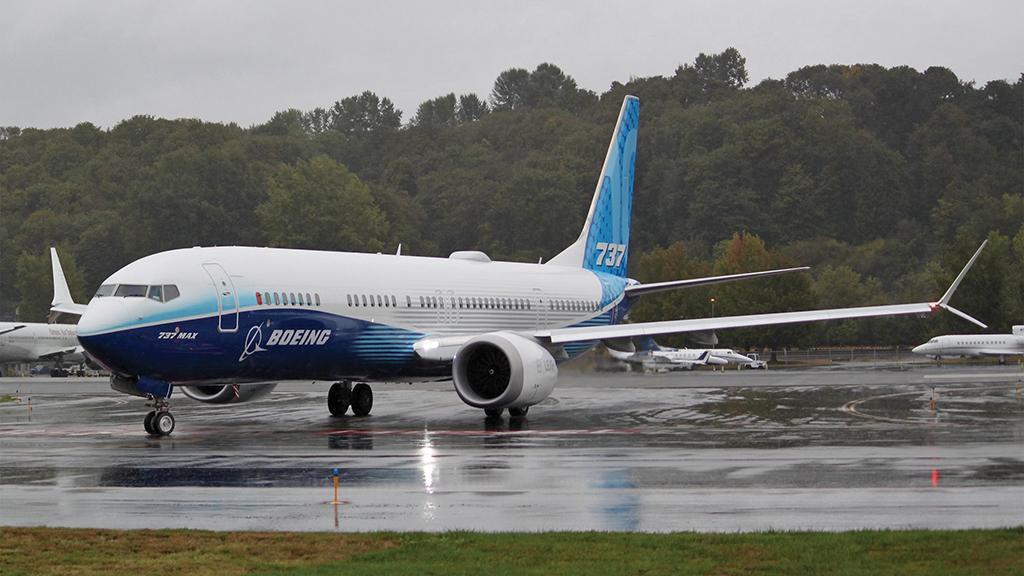
The 737-10 will include several new safety features.
A move by U.S. lawmakers to green-light the Boeing 737-7 and 737-10 for FAA certification without requiring changes to antiquated flight-deck alerting systems has all but codified global 737 MAX fleet-wide upgrades that many saw as a foregone conclusion.
Under the provision added to a massive U.S. government funding bill passed in late December, 737 MAX operators will have three years after the FAA approves the 737-10 to retrofit their fleets with two enhancements Boeing is adding to that variant a third angle-of-attack (AOA) data source and a switch that allows pilots to silence nuisance overspeed and stick-shaker stall warnings. Boeing must pay for the upgrades, the legislation adds.
The bill’s language prohibits operation of any 737 MAX variant without a “synthetic enhanced angle-of-attack system and means to shut off stall warning and overspeed alerts” or equivalent, FAA-approved systems beginning “three years after the date on which the administrator issues a type certificate for the Boeing 737-10.”
Language in the bill also requires any 737 MAX-family variant certified one year after the 737-10 to incorporate the new AOA and nuisance alert shut-off switches as part of its original design. While Boeing has not announced plans for other variants beyond the 737-7 and 737-10, development of slightly modified designs, such as extended-range versions, is possible.
While the bill applies to U.S. operations, broader adoption of the retrofit mandate is a certainty. Boeing agreed to develop both upgrades to satisfy Euro-pean Union Aviation Safety Agency (EASA) concerns raised during the model’s 21-month grounding following two fatal 737-8 accidents, in October 2018 and March 2019. EASA’s January 2021 return-to-service report said both functions would be introduced on the 737-10 and “retrofitted on in-service MAX airplanes . . . in order to ensure the long-term safety of the 737 MAX.”
Boeing began testing the new AOA data source in March 2022 as part of 737-10 certification. The nuisance-alert switches were revealed publicly during the aircraft’s appearance at the Farnborough Airshow in July 2022.
Adding a third AOA source and helping pilots suppress nuisance stick-shaker alerts were two of the top priorities regulators identified during their reviews of the 737 MAX’s design following the accidents. While poorly designed software behind the MAX’s maneuvering characteristics augmentation system (MCAS), an addition to the 737 MAX’s flight control functionality, and Boeing’s decision to keep pilots out of the loop about the changes were the main contributors to each accident, faulty AOA data and related nuisance alerts played roles in confusing flight crews in both cases.
Several regulators, including EASA and Transport Canada, green-lighted a procedure that lets pilots pull a circuit breaker to silence a stick-shaker alert if necessary. The FAA does not support the procedure, citing risks of pilots taking their attention away from flying the aircraft or monitoring its state. Development of the switches as part of the 737-10’s certification and the new provision mandating they be retrofitted eliminates the need for the procedure long-term.
Boeing needed the spending-bill provision to offset language in a 2020 law that prohibited the FAA from issuing a type certificate to a transport category aircraft after Dec. 27, 2022, unless the design includes an advanced flight crew alerting system. The 737 MAX’s certification basis included exemptions from aspects of FAA’s flight crew alerting rules that ensure flight decks provide pilots with specific cues and troubleshooting guidance, not simply lights and sounds that signify problems.
Older 737 versions were developed before the rules were in place and do not meet current regulations. The FAA granted the exemptions based on Boeing’s argument that complying with the updated regulations would add unnecessary expense and pilot-training requirements to an already safe baseline design. Boeing would have faced similar hurdles, not to mention significant delays in getting the 737-7 and 737-10 variants approved, if forced to modify the 737 MAX design to incorporate the systems.
Investigations into the two 737 MAX crashes cited pilot confusion amid a series of warnings and alerts as likely contributors to both accident sequences. Shortcomings in the MCAS design and certification played the largest role in the accidents. But human-factors elements, including the lack of the pilots’ clear understanding of what was happening to the aircraft and Boeing’s incorrect assumptions about how they would react to an MCAS malfunction, are among the most prominent lessons learned from the investigations and related studies.
When the Aircraft Safety and Certification Reform Act was signed into law on Dec. 27, 2020, few expected the flight crew alerting provision would affect the 737-7 or 737-10 certification timeline because of the two-year period before it went into force. But the FAA’s increased scrutiny of certification efforts—some of it, such as greater involvement in system safety assessments, required by the law—and Boeing’s work in particular mean new-aircraft development programs are taking longer.





